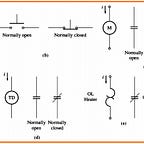Introduction to Synchronous Generator, Working, Construction, Types & Applications
introduction to Synchronous Generator
2 min readDec 8, 2021
- The synchronous generator is also known as an alternator, it converts the mechanical power into the electrical.
- The electric energy we used in our home or industries is mostly produced by the synchronous generator.
- There are many sources of energy conversion in the world but most of the energy is converted by the synchronous generator.
- They convert mechanical energy into the electrical energy up to the 1500 megawatt.
- The synchronous generators used in our industries are constructed by a static or rotating magnetic field.
- The construction of the synchronous generator built by the static field is like the DC generator.
- In the rotating magnetic field generator, the static armature is known as the rotor.
Working Principle of Synchronous Generator
- The working of a synchronous generator is based on Faraday’s Law of electromagnetic induction.
emf= dΦ/dt
- This law says that the rate of change of flux in any device will produce emf in that device. If a device is static and the field is rotating it will also produce field in the device.
- In case of a synchronous generator, the rotor is rotating, and it produces field in the stator.
- For an understanding of emf induced in any device study the article on the voltage induced in the loop
.
Synchronous Generator Construction
- In a synchronous generator, there is no residual magnetism to produce self-excitation like the induction motor and induction generator.
- The external direct current supply is given to the rotor and it produces field in the rotor. When we rotate the rotor by mechanical way, its field link with the stator windings and produce a voltage in the stator.
- There are 2 terms we use to represent windings in the machines first one is armature winding and the other one is field winding.
- The windings that produce the main field in a machine called field winding and the windings that produce voltage is called armature.
- In case of the synchronous generator, the field windings are the rotor windings and the stator windings are the armature windings.https://www.theengineeringknowledge.com/introduction-to-synchronous-generator/
